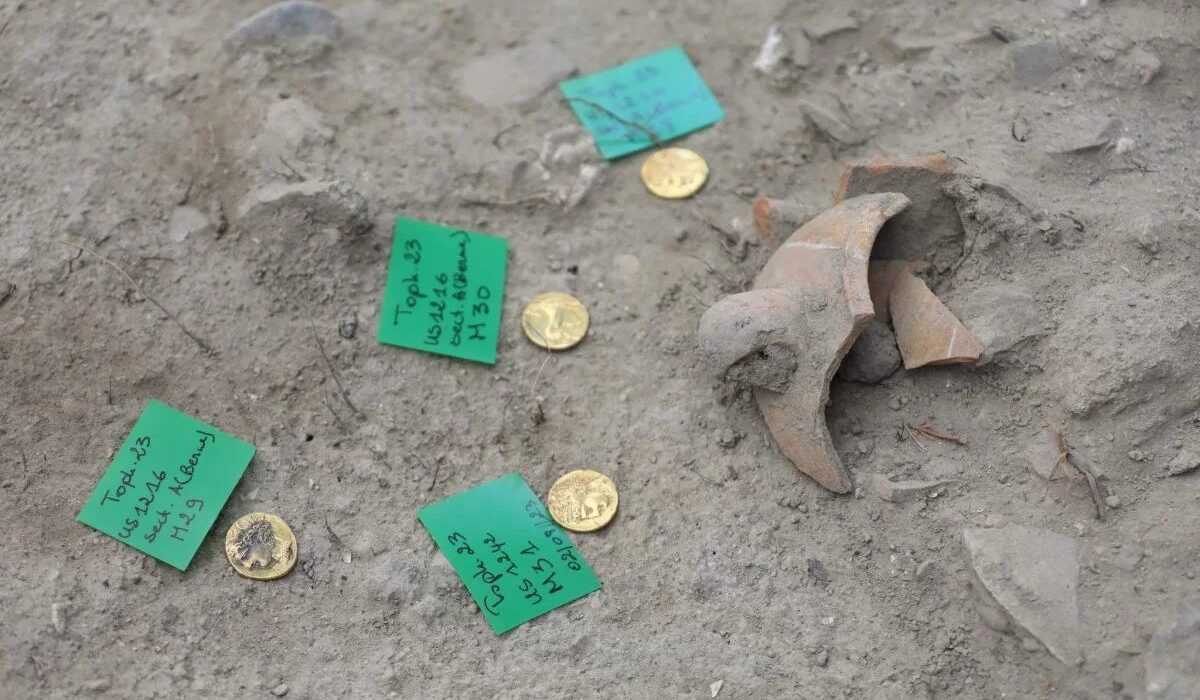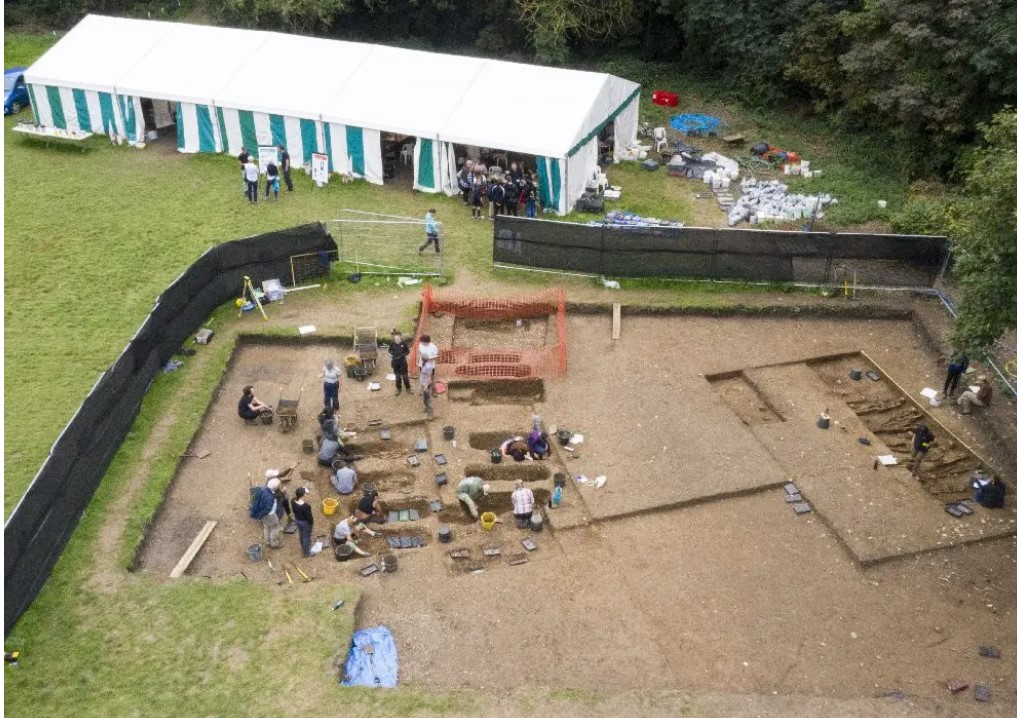Ancient Gold Offerings and Insights from Carthage’s Tophet Site
Situated along the Tunisian coastline, the remnants of the illustrious city of Carthage stand as a testament to its former grandeur and influence, once rivalling even Rome. Among the historical relics lies the Tophet, a sacred site where worship and devotion once intertwined with gold offerings and rituals.
Founded approximately 2,900 years ago by the Phoenicians, Carthage evolved into a bustling maritime hub of substantial prosperity. The Tophet, a consecrated precinct common in Phoenician cities, held a significant role in Carthaginian culture. This sacred ground served as a location for both sacrifices and burials, particularly of young children. A shrine area was designated for sacrificial offerings, while a cemetery zone housed the remains of the departed.
Recent archaeological efforts at the Tophet have yielded a remarkable array of discoveries, as announced by Tunisia’s Ministry of Cultural Affairs. The findings include five gold coins dating back 2,300 years, tombstones, and numerous urns containing the remains of animals, infants, and premature babies.
The rare gold coins, approximately an inch in diameter, bear an intricate design depicting the countenance of Tanit, an ancient goddess embodying fertility and motherhood. These exquisite pieces were offered to the Tophet’s main deities, Hammon and Tanit, by affluent devotees seeking to express their reverence.
Alongside the golden artifacts, the site has revealed urns and tombstones that provide further insights into the ancient rituals and practices associated with the Tophet. Archaeological endeavors have unveiled over 20,000 urns at the location, containing the remains of children, primarily newborns and those up to four years old.
While historical understanding of these practices has evolved, compelling evidence suggests that Carthaginian parents engaged in ritualistic sacrifices of young children to appease the gods. This somber practice, once contested, has gained acceptance among experts. Cultural differences and perspectives from ancient times underscore the complexity of this ritual, which might have been driven by profound religious devotion or a perception of communal benefits outweighing individual loss.
The history of Phoenician Carthage culminated in its conquest by the Romans, who reconstructed the city atop the ruins of their erstwhile rival. In contemporary times, Carthage exists as a suburban extension of Tunis, the capital of Tunisia.
The ongoing excavations at Carthage’s Tophet provide a window into the enigmatic practices and beliefs of an ancient civilization, illuminating the complexities of their society and the intricate interplay between devotion, sacrifice, and community dynamics.




